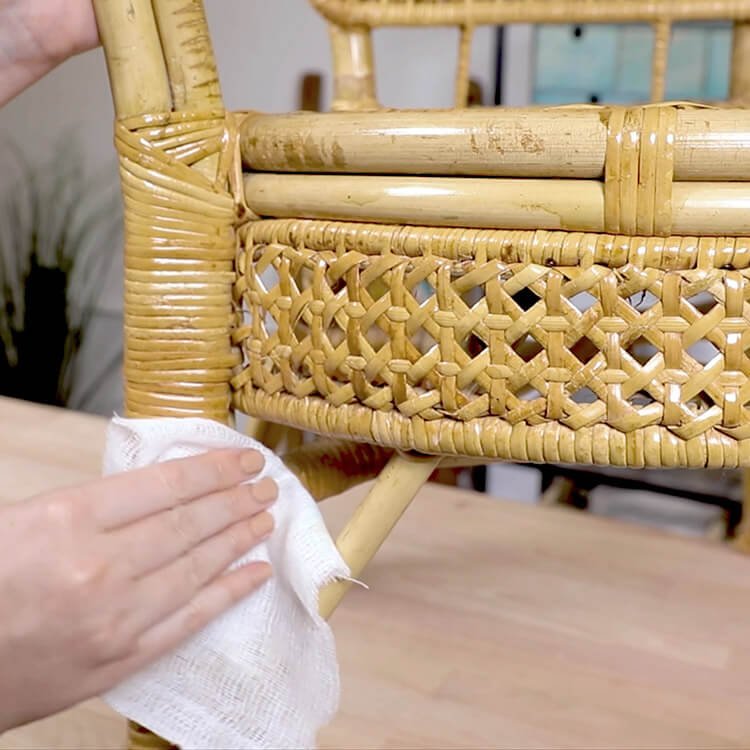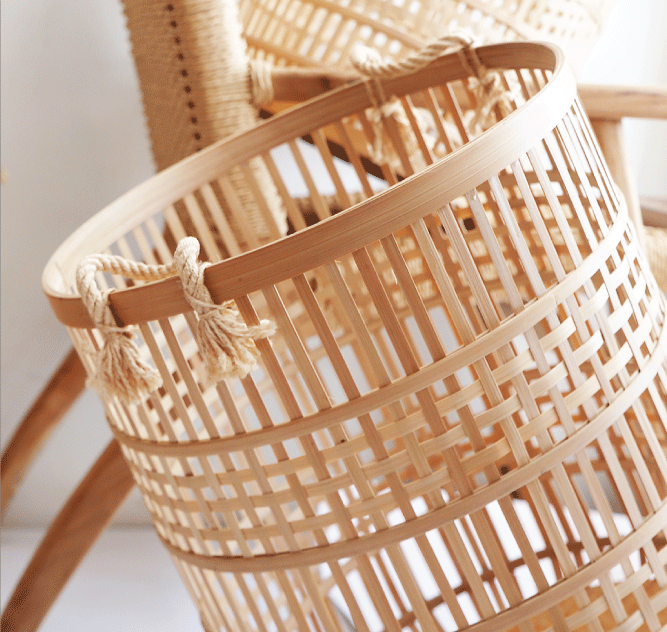Caring for rattan and bamboo involves regular cleaning with a mild detergent, avoiding prolonged exposure to moisture, and applying protective coatings to preserve their natural beauty and longevity.
Love Your Rattan and Bamboo Furniture? Here’s How to Keep It Looking Like New!
Rattan and bamboo furniture have a long and rich history, dating back thousands of years. Rattan is a type of vine that grows in tropical regions, while bamboo is a type of grass that grows in various climates. Both materials have been used for centuries to create furniture and other household items due to their durability, flexibility, and natural beauty.
The use of rattan and bamboo in furniture making can be traced back to ancient civilizations such as Egypt and China. In Egypt, rattan was used to create baskets and other household items, while in China, bamboo was used to construct furniture and even entire buildings. Over time, the use of rattan and bamboo spread to other parts of the world, including Southeast Asia and Europe.
One of the main advantages of using rattan and bamboo furniture is their sustainability. Both materials are renewable resources that grow quickly and can be harvested without causing significant damage to the environment. Additionally, rattan and bamboo furniture are lightweight and easy to move around, making them ideal for outdoor use or small living spaces.
Understanding the Characteristics of Rattan and Bamboo
While rattan and bamboo are often used interchangeably in furniture making, they are actually two different materials with distinct characteristics. Rattan is a type of vine that is flexible and durable, making it ideal for weaving into furniture frames. Bamboo, on the other hand, is a hollow grass that is strong and lightweight, making it suitable for creating solid pieces of furniture.
In terms of physical characteristics, rattan has a smooth surface with a natural glossy finish. It can be left in its natural state or stained to achieve different colors. Bamboo has a rougher texture with visible nodes along its length. It can also be left natural or stained to enhance its appearance.
When it comes to pros and cons, rattan furniture is known for its strength and durability. It can withstand heavy use and is resistant to cracking and splitting. However, it is susceptible to moisture and should be kept away from direct sunlight to prevent fading. Bamboo furniture, on the other hand, is lightweight and easy to move around. It is also resistant to moisture and insects. However, it can be prone to splitting if not properly cared for.
Factors that Affect the Durability of Rattan and Bamboo Furniture
Several factors can affect the durability of rattan and bamboo furniture. One of the main factors is environmental conditions. Rattan and bamboo are natural materials that can be affected by changes in temperature and humidity. Excessive heat or cold can cause the materials to expand or contract, leading to cracks or warping. High humidity levels can also cause rattan and bamboo to become moldy or mildewed.
To choose the right type of rattan and bamboo furniture for your needs, consider the climate and conditions in which the furniture will be used. If you live in a humid environment, opt for furniture that has been treated with a protective coating to prevent moisture damage. If you live in a dry climate, choose furniture that has been properly sealed to prevent cracking.
To maintain rattan and bamboo furniture and ensure its durability, it is important to keep it clean and free from dust and debris. Regularly dusting the furniture with a soft cloth or brush can help prevent dirt from building up and causing damage over time. Additionally, avoid placing rattan and bamboo furniture in direct sunlight, as this can cause fading and drying out of the material.
Common Issues with Rattan and Bamboo Furniture and How to Fix Them
While rattan and bamboo furniture are known for their durability, they can still experience common issues over time. One common issue is loose or broken weaving. This can occur due to wear and tear or improper use of the furniture. To fix this issue, you can try DIY solutions such as reweaving the damaged area or using adhesive to secure loose strands. However, for more complex repairs, it is best to call a professional rattan and bamboo furniture repair service.
Another common issue is mold and mildew growth. Rattan and bamboo are organic materials that can be susceptible to mold and mildew if exposed to excessive moisture. To prevent mold and mildew growth, make sure to keep the furniture clean and dry. If you notice any signs of mold or mildew, you can use a mixture of water and vinegar to remove it. However, if the problem persists, it is best to consult a professional for proper cleaning and treatment.
Tips for Cleaning Rattan and Bamboo Furniture
Cleaning rattan and bamboo furniture is relatively easy and can be done with a few simple steps. First, remove any cushions or upholstery from the furniture. Then, use a soft brush or cloth to remove any dust or debris from the surface of the furniture. You can also use a vacuum cleaner with a brush attachment to remove any hard-to-reach dirt.
Next, mix a mild detergent with warm water in a bucket. Dip a soft cloth or sponge into the soapy water and gently scrub the furniture, paying extra attention to any stained or dirty areas. Avoid using abrasive cleaners or brushes, as these can damage the surface of the furniture.
After cleaning, rinse the furniture with clean water to remove any soap residue. Use a clean cloth or towel to dry the furniture thoroughly. Avoid placing wet cushions or upholstery back on the furniture until it is completely dry, as this can cause mold or mildew growth.
How to Protect Rattan and Bamboo Furniture from Sun Damage
Sun damage can cause rattan and bamboo furniture to fade and become brittle over time. To protect your furniture from sun damage, it is important to keep it out of direct sunlight as much as possible. If you have outdoor rattan or bamboo furniture, consider placing it in a shaded area or using a protective cover when not in use.
If your furniture is already sun-damaged, there are ways to restore its appearance. One option is to use a wood stain or paint to cover up any faded areas. Make sure to choose a color that matches the original shade of the furniture. Another option is to use a UV-protective spray or sealant to prevent further damage from the sun.
Preventing Mold and Mildew on Rattan and Bamboo Furniture
Mold and mildew can be a common issue with rattan and bamboo furniture, especially if it is exposed to excessive moisture. To prevent mold and mildew growth, it is important to keep the furniture clean and dry. Avoid placing wet cushions or upholstery on the furniture, as this can create a breeding ground for mold and mildew.
If you live in a humid environment, consider using a dehumidifier or air conditioner to reduce moisture levels in your home. Additionally, make sure to regularly inspect the furniture for any signs of mold or mildew. If you notice any growth, use a mixture of water and vinegar to remove it. You can also use a commercial mold and mildew cleaner if necessary.
How to Store Rattan and Bamboo Furniture During Winter Months
If you live in an area with harsh winters, it is important to properly store your rattan and bamboo furniture during the colder months to prevent damage. Before storing the furniture, make sure to clean it thoroughly and remove any cushions or upholstery. This will help prevent dirt and moisture from building up over time.
Next, choose a dry and well-ventilated storage area for your furniture. Avoid storing it in damp basements or garages, as this can lead to mold or mildew growth. If possible, cover the furniture with a breathable fabric cover to protect it from dust and debris.
During the winter months, check on your stored furniture periodically to ensure that it is still in good condition. If you notice any signs of damage or mold growth, take the necessary steps to address the issue before it becomes worse.
DIY Solutions for Minor Rattan and Bamboo Furniture Repairs
Minor repairs to rattan and bamboo furniture can often be done at home with a few simple tools and materials. For loose or broken weaving, you can try reweaving the damaged area using new rattan or bamboo strands. This can be done by carefully removing the damaged strands and replacing them with new ones. Make sure to secure the new strands tightly to prevent them from coming loose.
For small cracks or splits in the furniture, you can use adhesive or wood glue to repair them. Apply a small amount of adhesive to the crack or split and use clamps or tape to hold it together until the glue dries. Once dry, sand down any excess glue and touch up the area with paint or stain if necessary.
It is important to note that DIY repairs are best suited for minor issues. If you are unsure about how to properly repair your rattan or bamboo furniture, it is best to consult a professional for assistance.
When to Call a Professional for Rattan and Bamboo Furniture Repairs
While minor repairs can often be done at home, there are times when it is best to call a professional for rattan and bamboo furniture repairs. If you are dealing with extensive damage, such as large cracks or broken frames, it is best to leave the repairs to a professional who has the necessary skills and experience.
Additionally, if you are unsure about how to properly repair your furniture or if you do not have the necessary tools or materials, it is best to consult a professional. They will be able to assess the damage and provide you with the best course of action to restore your furniture to its original condition.
When choosing a professional rattan and bamboo furniture repair service, make sure to do your research and read reviews from previous customers. Look for a service that has experience working with rattan and bamboo furniture and offers a warranty on their repairs.
Conclusion and Final Thoughts on Maintaining Rattan and Bamboo Furniture
In conclusion, rattan and bamboo furniture have a long history and offer many advantages. They are sustainable, lightweight, and durable, making them ideal for both indoor and outdoor use. However, it is important to understand the characteristics of rattan and bamboo, as well as the factors that can affect their durability.
By choosing the right type of rattan and bamboo furniture for your needs, properly maintaining it, and addressing any issues that arise in a timely manner, you can ensure that your furniture will last for many years to come. Whether you choose to do minor repairs yourself or call a professional for assistance, taking care of your rattan and bamboo furniture will help preserve its natural beauty and functionality.
We hope this article has provided you with valuable information on maintaining rattan and bamboo furniture. We encourage you to share your own tips and experiences with maintaining these types of furniture in the comments below.
Originally posted 2024-01-02 12:29:31.



